NORTH WALES COAST RAILWAY:NOTICE BOARD
Rheilffordd arfordir gogledd Cymru: Hysbysfwrdd
02 November 2020





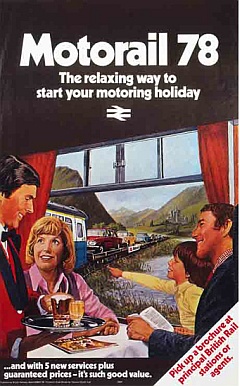
Forthcoming events
(see also our Calendar page for venues)
Note: we have removed all entries relating to meetings as the events are cancelled.
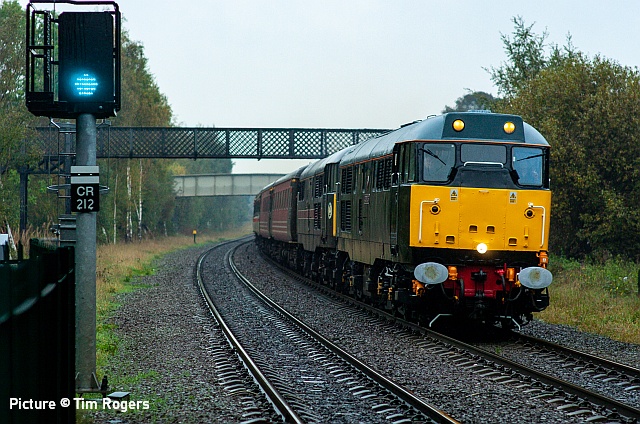
31 452 Minotaur and 31 459 Cerebus, with 31 454 The Heart of Wessex on the rear, approaching Shotton Low Level on 26 October 2006 with an FM Rail 'Intercity Merrymakers, 1Z37 09:18 Barrow Hill - Llandudno. Picture by Tim Rogers.
Apologies: The 9 November update is delayed until the evening of 10 November, due to a clash with other family activities. - Charlie
Lockdown (etc)
Well, here we are in a 'fire breaker' or a 'lockdown' depending on what side of the line we happen to live on; life on Boundary Lane in Saltney where the border runs down the street must be confusing. Trains have running along the Coast line, mostly completely empty and with short-notice cancellations every day, perhaos due to staff shortage. Flooding - of the 'cutting becomes canal' kind - affected the Conwy Valley last week, although it seems that bus substitution had already been planned.
Meanwhile, please don't bend any rules to take pictures, and keep the historic images coming, ideally with some text so we don't have to do too much research at this end.
In other news, the Transport for Wales franchise held by KeolisAmey has been terminated, although the company will be paid to runs the trains until February next year when KeolisAmey staff working on rail services will be transferred over to a publicly owned company, currently called Transport for Wales Rail Ltd. An 'operator of last resort' like the one which took over Northern. The passengers should notice any difference, we are told, although the Government is going to have to find a significant amount of money to keep things going.
Picture news
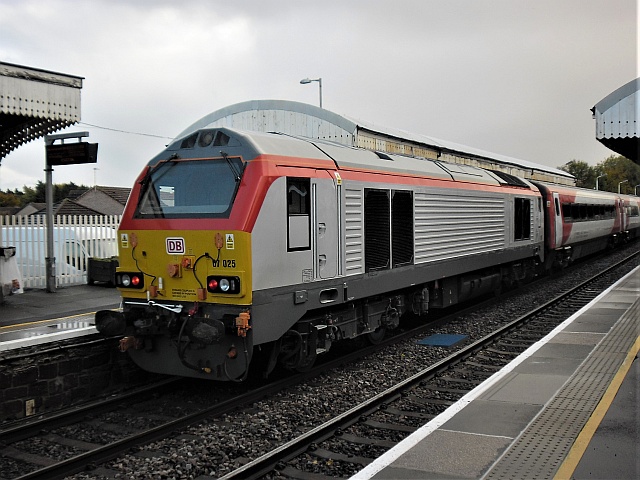
The trial run of the Class 67/Mk4 stock took place as planned from Cardiff to Chester and back on 28 October. Chris Parker was at Gobowen station with his camera; 67 025 is propelling.
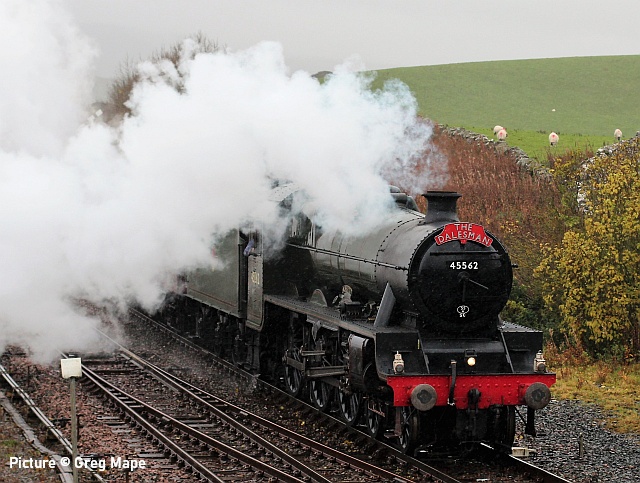
Greg Mape called in at Kirkby Stephen on 29 October to photograph the loco currently known as 45562 Alberta working the 'Pendle Dalesman' tour from Chesterfield to Carlisle Upperby in foul weather.
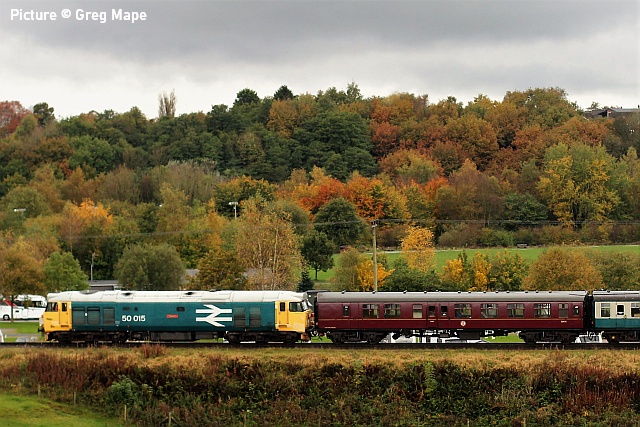
50 015 Valiant in action on the East Lancashire Railway, 24 October (Greg Mape).
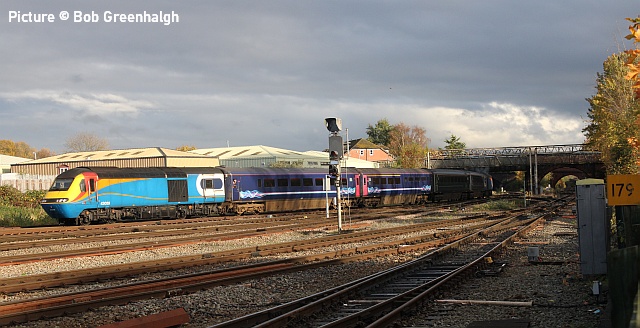
Locomotive Services HSTs 43 058 and 43059 were on Crewe - Chester test run, 27 October (Bob Greenhalgh). Also in the news has been the HST version of the 'Midland Pullman' , as seen in this YouTube video. This is also an LSL venture, under the 'Statesman' name. A trip from London to Manchester for 14 November has been advertised, with the Manchester Christmas Market as an attraction. (Some hopes).
More on Motorail
Dave Sallery's Motorail picture in the last issue has prompted some very interesting comments from readers. An incidental fact is that one of the InterCity-liveried vans eventually found its way to the wheel lathe installation opposite Longsight depot, probably to act as a coupling translator for vehicles not fitted with screw couplers.
From David Pool:
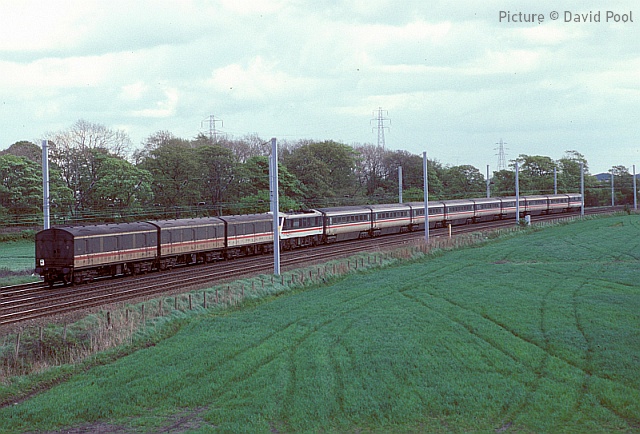
1995 was the last year of the Motorail services on the West Coast Main Line, and the usual formation Southbound was an electric locomotive (class 86, 87 or 90) between the Motorail vans and the rake of coaches headed by a Driving Van Trailer. VT. The image above shows the 13:38 Glasgow to Euston at Winwick on 8 May 1995, headed by DVT 82115 with 90 004 in the train. This was advertised as a Motorail service, but I think it was available to other passengers. At that time it would have been difficult to assemble a rake of coaches dedicated to Motorail passengers (in the early days these would have been Mk 1 Corridor Firsts), and it would make sense to use a rake of the normal Euston to Glasgow trains. I think the vans for the Northbound Motorails would have been dragged on the back of the DVT, but I don't have any photographic evidence of this.
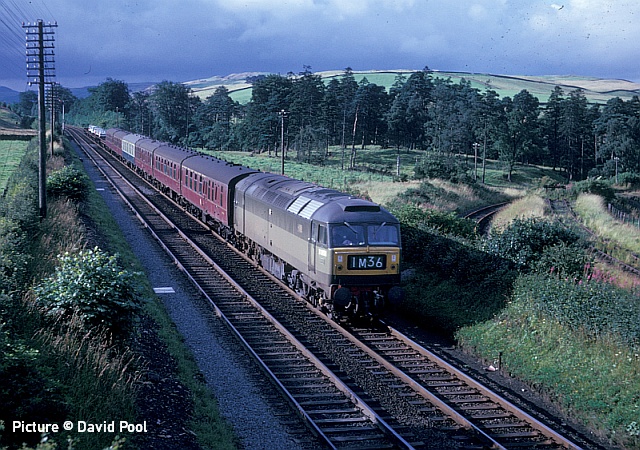
Readers might like my image of D1856 with a train at Beattock on the evening of 21 August 1965, coming south and probably from Perth. I noted it to be a "Car Ferry", which may have been the description before Motorail. The coaches are not sleeping cars, so it would not have been going to Euston.I have found a record that 1M36 was the headcode for an Inverness to Crewe train in the 1960s.
From Keith Stewart:
In BR days there was a service between Euston and Stranraer (ferry connection?) hauled electrically to Carlisle and a type 47 forward. At Carlisle the GUVs were shunted into Collier Lane siding (upside, south end of Carlisle station) for passengers' (part of motorail?) cars to be unloaded. Later the southbound service arrived behind a 47. The electric loco. had already coupled to the south end of the two GUVs (now reloaded) and propelled them to the north end of the station, then hauled them onto and coupled up to the north end of the express while the diesel went elsewhere, giving the formation shown in the photograph. As I recall this train was due into Crewe about 1715. Presumably the train loco then shunted the GUVs for unloading after arrival at Euston. Parsimony, sadly, was forced upon BR by the treasury of the day but, if this is the service in question, it is an example of several good ideas BR had around this time. Another was the summer Saturday Paddington - North Wales service using the day coaches off the overnight Penzance - Paddington sleeper, which would otherwise stand idle.
Looking back: Vale of Rheidol Part 3 - by David Pool
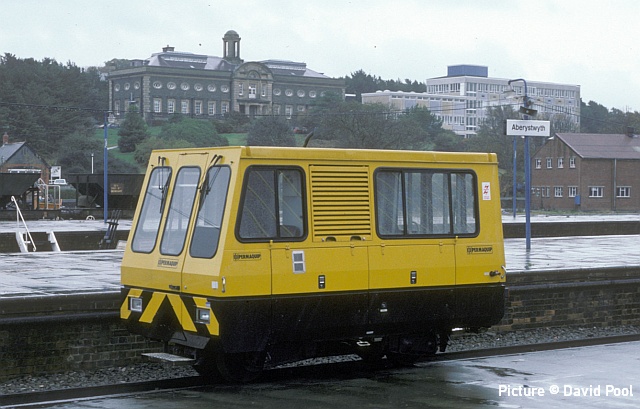
In 1963 the Vale of Rheidol Railway acquired a regauged Wickham Trolley with a J.A.P. engine, later replaced by a Moto Lombardini engine when spares became unavailable. It ran until 1984, having then reached the end of its useful life, and was replaced in 1985 by a new Permaquip Personnel Carrier DX 68804. This manufacturer has supplied Personnel Carriers to a number of UK railways, and their products are a far cry from the Wickham Trolley era. The V of R vehicle was photographed at Aberystwyth on 9 October 1986.
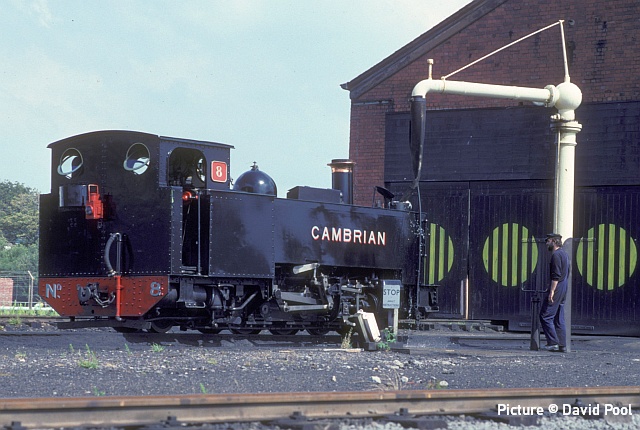
The Brecon Mountain Railway had taken over the V of R in 1989, and changes soon followed. No 8, not carrying nameplates, is outside the shed on 27 July 1990. Its colour is noteworthy, in that it is said to be “Cambrian invisible green”. I had always assumed it was black, but apparently there is a greenish cast when viewed against other blacks, The opposite situation occurred on the Holyhead Breakwater Railway, when the black locomotives acquired a green patina when exposed to the weather, and were often assumed to have been painted green.
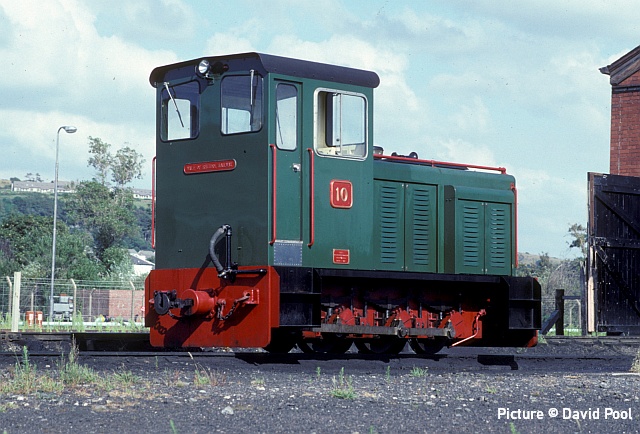
The other new kid on the block on 27 July 1990 was No.10, a diesel locomotive ordered by British Rail and assembled by the Brecon Mountain Railway in 1987 from parts obtained from Baguley-Drewry when a locomotive order had been cancelled. At one time it was named Brian, after a character in the Magic Roundabout TV programme who was not noted for his speed.
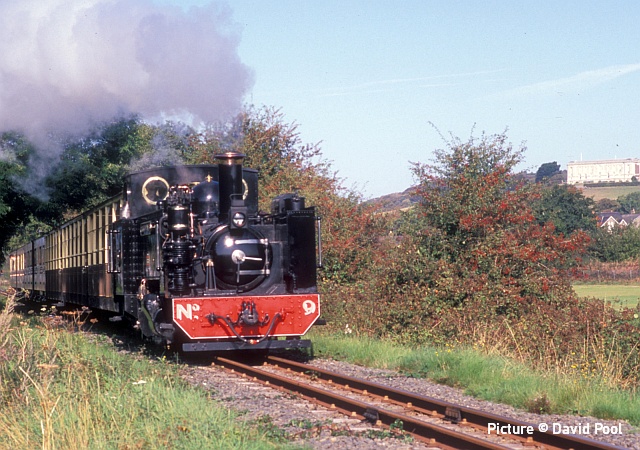
Over the years the V of R locomotives have had significant changes which may not have been noticed by the casual observer. Oil firing was used from around 1978 to 2013, but by 2019 the three steam locomotives had reverted to coal firing. A more obvious change has been the use of air instead of a vacuum for the train brakes, the conversion taking place in the early 1990s. An air pump was sited in front of the side tank on the locomotives, as seen on No.9 on 21 September 2014 approaching the Rheidol Bridge near Llanbadarn. Subsequently this rather unsightly arrangement was changed and the locomotives now have the air pump concealed in the front of the side tank.
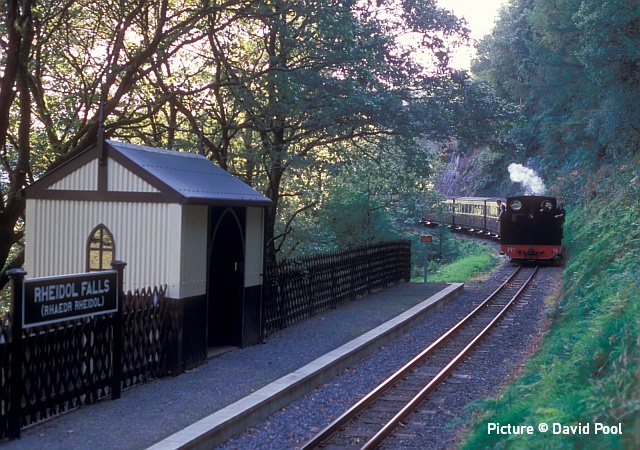
Having last visited Rheidol Falls Halt in 1983, I decided to try my luck in 2014, and took it easier this time on the trek up the hillside. It became clear that any photograph would be difficult, especially for trains heading for Devil’s Bridge, but I got a reasonable shot of No. 9 returning. It may have been full sun at Llanbadarn and in the valley, but shade is the norm at Rheidol Falls!
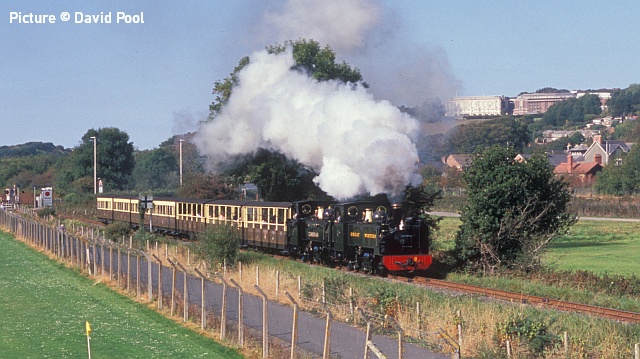
21 September 2014 was on an Enthusiasts' Weekend, and one of the highlights was this double header. I can’t remember why this was such a rare occurrence, and I have never seen any other photographs of the V of R locomotives double heading (although visiting smaller locomotives have done so). The train appears to have one more coach than usual. Can anyone give an explanation? The train hauled by Nos 8 and 9 is leaving Llanbadarn, with the National Library of Wales buildings in the distance.
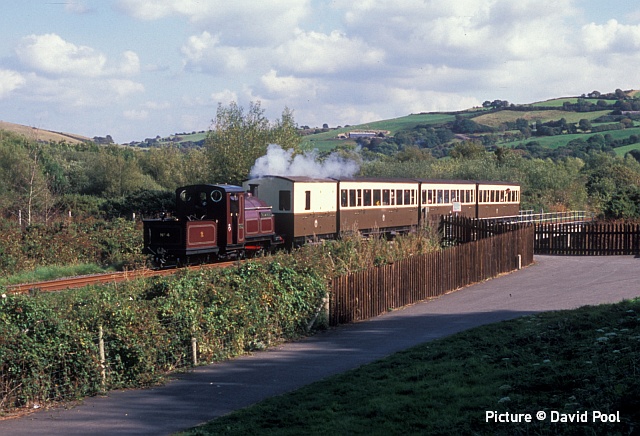
The star of the show on 21 September 2014 was No.4 Palmerston, visiting from the Ffestiniog Railway. The last time it had been on the V of R was in 1922, having previously been loaned for short periods since 1912. It was not being permitted to haul a full length train, but was quite capable of handling the three coaches plus a van, here just having crossed the Rheidol Bridge.
Rheidol Remniscences - by Chris Magner
Regarding the item in the last issue: the Vale of Rheidol came under the London Midland Region 1963 when the Regional boundaries were revised. Stoke Division was formed, as far as I remember in 1962, the largest on BR or certainly on the LMR. It was unfair for advocates of closure to compare the line with the Talyllyn and the Ffestiniog as railwaymen's jobs depended on it to keep the depot going at Aberystwyth. Following the successful visit of the Wirral Railway Circle (WRC) to the VoR on Easter Saturday a further visit was arranged in September, after which the WRC suggested that the Stoke Division form the Vale of Rheidol Railway Supporters' Association to keep the line in BR's hands and so protect railwaymen`s jobs.
The 'Welshman' Headboard was used by the Wirral Railway Circle on the occasion of their Easter Saturday 1969 visit from the Wirral to the VoR. The headboard had been designed for the WRC's first railtour on Saturday 22 March 1969 when we went from Chester as far as Trawsfynydd Lake Halt, the very end of the line, the first passenger train through Blaenau Ffestiniog. The May 1968 photo is, I think, the first, or one of the first, trains to use the new VoR Deviation, opened on 20 May 1968. Some of the passengers look like officials. As George Dow was not known to be a GWR fan, rescuing a GWR line was most commendable. As an avid GWR fan I found it most upsetting that George's son Andrew once said the initials GWR meant Gresley Was Right.
[Also commenting on the Rheidol items, Mike Stone wonders whether Aberystwyth - London through trains operated outside the summer season, and perhaps the October 1980 train was a charter. Can anyone elucidate? A 1979 timetable on the marvellous 2D53 website shows the last Euston train of the year as 23 September.]
Llangollen bridge appeal
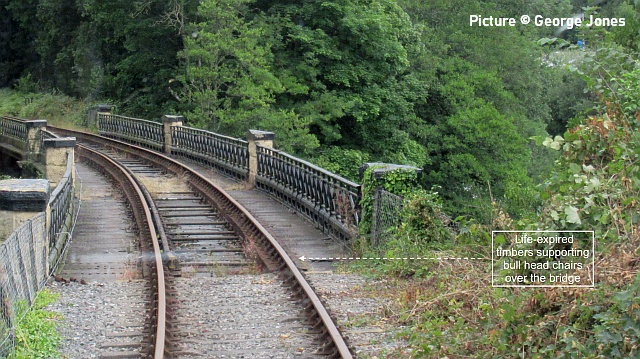
The railway desperately needs £15,000 to replace life-expired wooden timbers on the bridge crossing the river Dee, seen above in a picture by George Jones. The bullhead rail chairs are secured to these timbers and the Office of Rail and Road (ORR) has advised that they should be replaced before the commencement of the 2021 running season. This is in addition to other significant Permanent Way work needed to be carried out during the “closed” part of the year (e.g. relaying some of the track inside Berwyn tunnel).
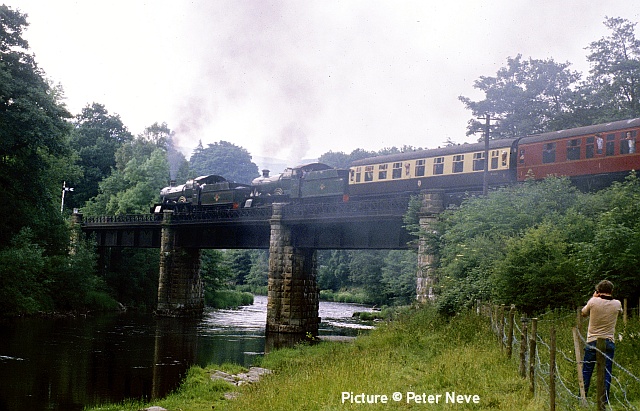
The bridge during a gala weekend in 1989 with Odney Manor and Foxcote Manor double-heading (Peter Neve).
The person coordinating the appeal is one of the new Directors, Mr. Paul Bailey who can be contacted via telephone 01490 450271 or email (paulbaileywincham@yahoo.co.uk) for details of payment methods should anyone be kind enough to help the railway at this difficult time (reduced income due to Covid 19 restrictions has not helped).
A tour in 2006 - recalled by Ken Robinson
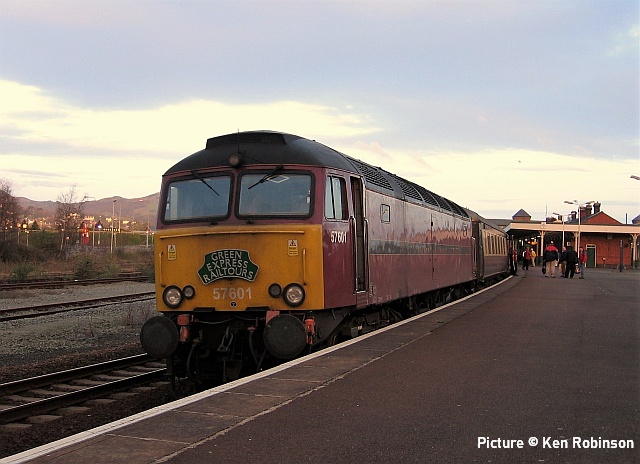
Due to lack of anything running on the Cambrian Coast and the Conwy Valley lines at the moment, here is a look back at a tour we did to Scarborough on Easter Monday 17 April 2006. The tour was run by 'Green Express Railtours' (what happened to them?) and was called 'The Peak and Pennine - A Scenic Land Cruise to York' (and Scarborough). Above, 57 601 at Llandudno Junction, for an early start at 06:38.
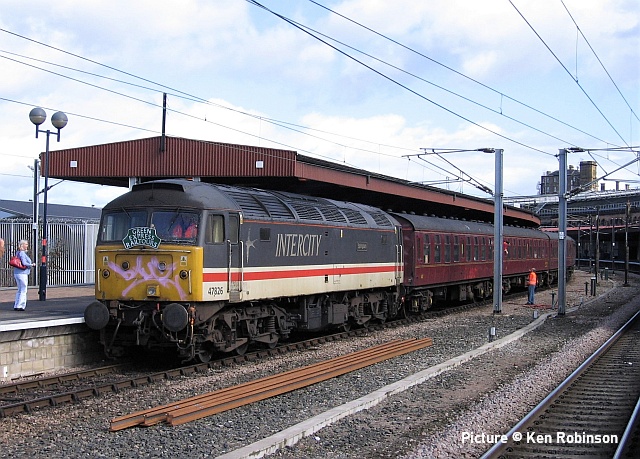
The special was hauled throughout by 57 601 and 47 826 and the outward journey was from Llandudno Junction via Chester, Altrincham, The Hope Valley line to Sheffield, and York.
Here, there was a scheduled 20 min. break, but as the train was early, it was nearer 40 mins. Passengers could disembark at York and spend 6 hours in the city. However, many stayed on board for the journey, via Selby, Beverley and Filey to Scarborough, where passengers could spend two hours in the seaside town.
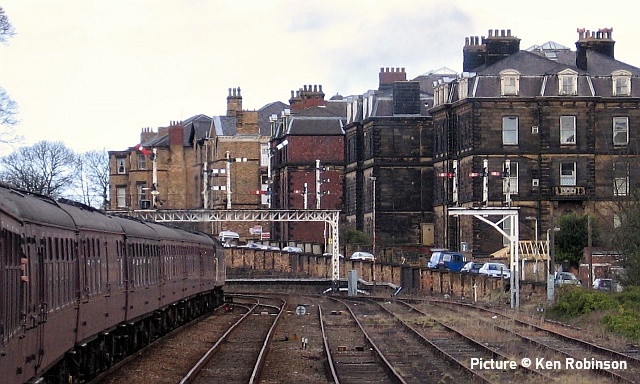
On the approach to Scarborough, the train passes underneath the famous Falsgrave signal gantry. The weather here was very pleasant, and the return journey to York was via Malton.
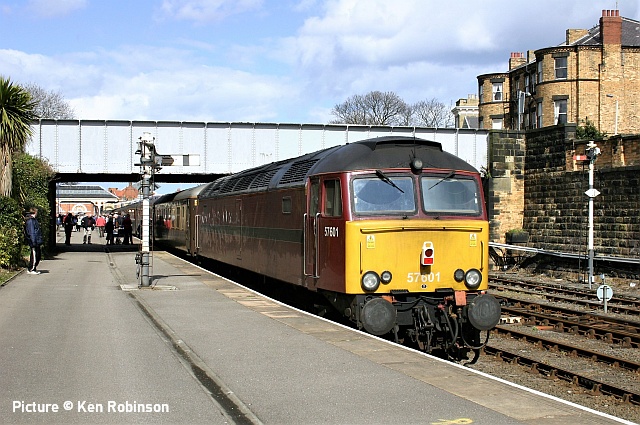
57 601 in the sun at Scarborough, getting ready for the return journey. From York, the train returned to Llandudno Junction via Leeds, Huddersfield and Stockport. Arrival back at Llandudno Jcn. was 4 minutes late - not bad at all for such a long journey (459 miles!)
From Dave Sallery's archive
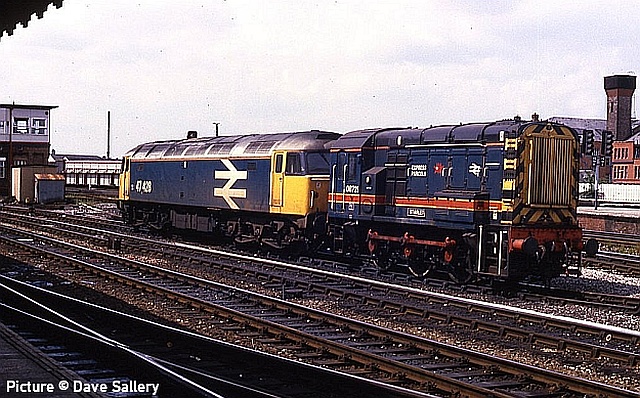
Manchester Victoria, with 08 721 and 47 428 on 09 July 1988. 08 721, in 'Red Star Parcels' livery was at the time based at Manchester Longsight depot; perhaps on this day it was rescuing a failed loco. (47 428 was withdrawn from service in January 1989.) Today 08 721 is based at the Alstom Technogy Centre, Widnes - looking good as new - fitted with special couplers for shunting multiple-unit trains being being worked on.

31 421 and 37 411 passing Mostyn Dock, Mostyn, 15 August 1992.
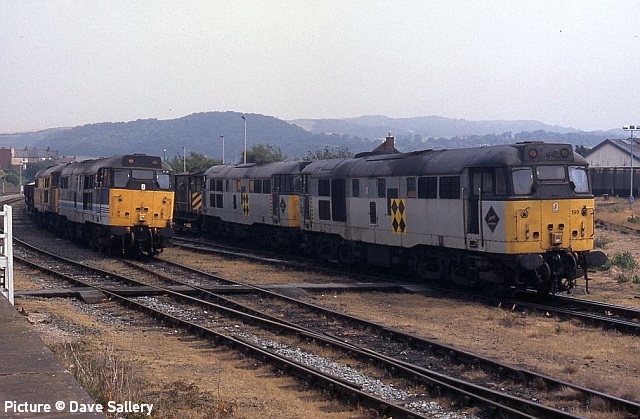
Once a common scene at Llandudno Junction: 31 439 and 31 119 on a ballast train, 31 175 and 31 199 with flasks from Trawsfynydd.
Cambrian Works
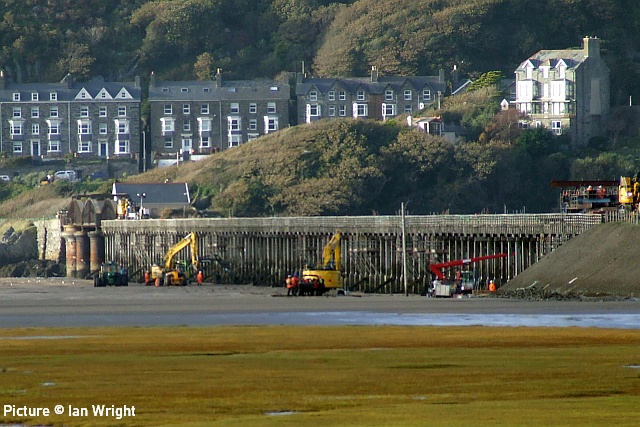
An low-tide hive of activity at Barmouth bridge, 20 October (Ian Wright).
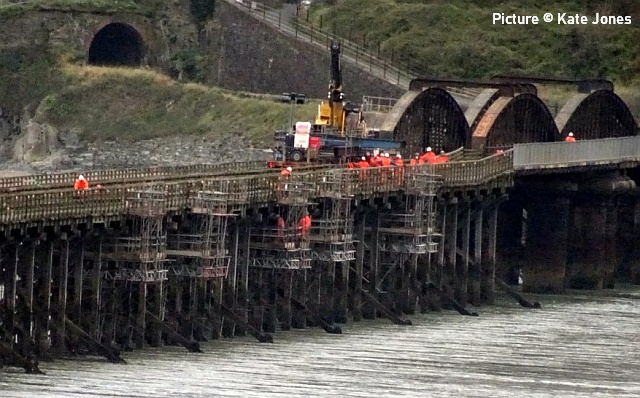
21 October (Kate Jones).
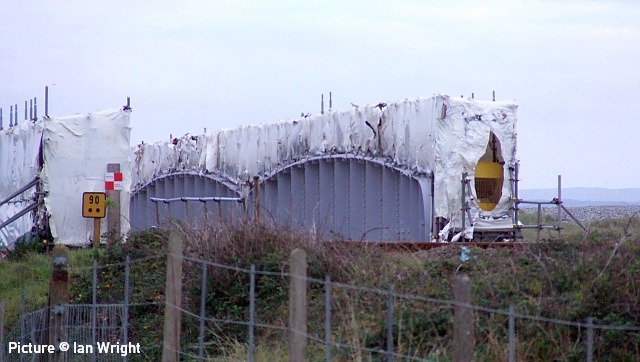
Barmouth Bridge is not the only current worksite on the Cambrian Coast lines: this the bridge over the Adon Dysynni near Tywyn on 22 April (Ian Wright).
Mostyn, 1982 - by 'Skimpler'
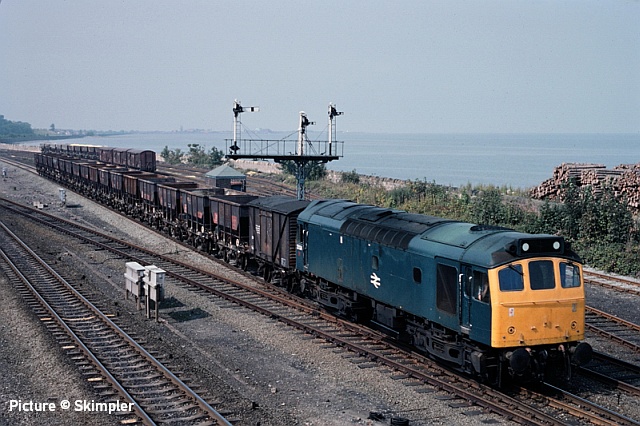
On 6 September 1982, 25 124 is rolling into Mostyn with empty HJV hopper wagons and a van from Llandudno Junction. These were coming in here to be loaded with Sulphur which would arrive by ship, mainly from Holland, sometimes Germany. When loaded, they would be tripped out to Associated Octel in Amlwch. Empties would find their way back to Llandudno Junction on the daily chemical tanker train or if any were ready to go, with the engine that worked them out there. When loaded, the wagons would be sheeted over for the journey west. Once unloaded, the sheets would be folded and put into the van as seen here behind the engine. I think there were a couple of vans in the circuit. In the distance, there are loaded wagons, some sheeted, some not done yet. Sheeting those on a windy day would not be a job I'd have wanted. There are also three continental ferry vans there, I don't know what they carried but were often seen at Mostyn. Does anyone know?
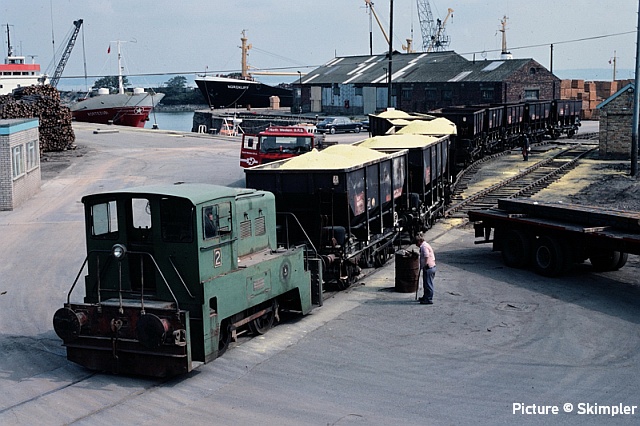
The second picture is a busy scene at Mostyn Docks as their shunter No. 2 is bringing some HJVs loaded with Sulphur from the ship, the Kortezubi. The wagons would be weighed on the weigh-bridge to the right. They would then be moved by this shunter into the exchange sidings and sheeted over before being transported to the Associated Octel plant in Amlwch. I think the bloke to the right of the engine has a crow bar for moving the point blades. Behind this first wagon is the red cab of a North Western British Road Services lorry, cab door open to reveal the logo. The Sulphur trains would run daily Monday to Friday once a ship arrived.
North Wales Coast home page | Archive | Previous Notice Board